| Columns Retired Columns & Blogs |
"Stereophile seldom reviews A/V receivers."
Is that because they aren't esoteric enough or not expensive enough for the audiophile cache?
I measured the Arcam FMJ SR250 with my Audio Precision SYS2722 system (see the January 2008 "As We See It"). Before performing any tests, I ran it at 40Wpc into 8 ohms for an hour. At the end of that time, the louvers on the top panel were warm, at 110.6°F (43.7°C).
Looking first at the Arcam as a conventional integrated amplifier, I performed all the measurements in Stereo Direct mode, which bypasses the digitization and DSP effects. With the volume control set to "99," the maximum gain at the loudspeaker terminals was 43.8dB. At the headphone outputs, the maximum gain was 26.2dB; at the preamplifier outputs it was 13.1dB. The unity-gain setting of the volume control would have been between "48" and "49": with the volume control set to the former, the gain was –0.6dB; with the latter, it was +0.4dB. All outputs preserved absolute polarity (ie, were non-inverting). The input impedance at low and middle frequencies was usefully high, at 90k ohms. Though the impedance dropped to 53k ohms at the top of the audioband, this is still sufficiently high not to load down source components.
The output impedance at the preamplifier outputs was a moderate 620 ohms, but examined at the headphone outputs, the impedance was 100 ohms, which is too high to be optimal for many low-impedance headphones. The output impedance at the speaker outputs was 0.11 ohm at 20Hz and 1kHz, rising inconsequentially to 0.13 ohm at 20kHz. As a result, the modification of the amplifier's frequency response with our standard simulated loudspeaker remained within ±0.1dB limits (fig.1, gray trace). This graph also reveals that the Arcam has a wide bandwidth, its response not reaching –3dB until 150kHz or so. The SR250's reproduction of a 10kHz squarewave thus has short risetimes (fig.2), though this graph shows the slightest hint of overshoot. Figs. 1 and 2 were taken with the volume control set to "99." The wide bandwidth at the speaker terminals was preserved at lower volume-control settings, as was the excellent channel balance. However, the headphone output was down by 0.5dB at 20kHz, and by 3dB at 59kHz.
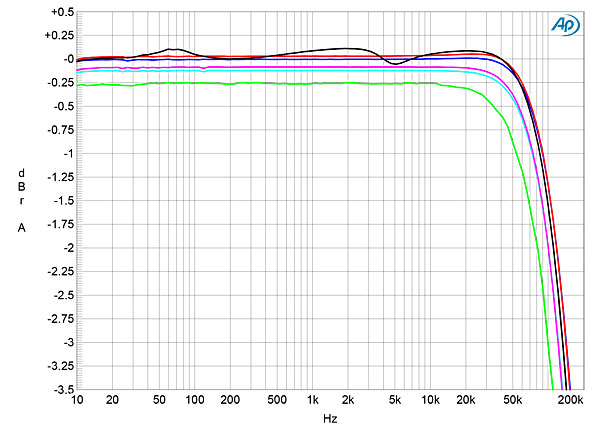

Channel separation (not shown) was good, at >80dB across the audioband. The unweighted, wideband signal/noise ratio, measured with the inputs shorted but the volume control set to "99," was okay, at 69.3dB in both channels ref. 1W into 8 ohms, improving to 77dB when the measurement was restricted to the audioband, and to 79.9dB when A-weighted. The primary source of noise appeared to be spuriae at the 60Hz AC mains frequency and its odd-order harmonics (fig.3).

The Arcam's maximum output power is specified as 90Wpc (19.5dBW) with both channels driven, 20Hz–20kHz, at <0.02% THD; and 125Wpc (21dBW), both channels driven, at 0.2% THD. Figs. 4 and 5 show how the percentage of THD+noise respectively varied with output powers into 8 and 4 ohms. At 1% THD+N, our usual definition of clipping, the SR250 exceeded the specifications, delivering 165Wpc into 8 ohms (22dBW) and 250Wpc into 4 ohms (21dBW). The downward slope of the trace in fig.4 indicates that actual distortion lies below the noise floor; the broken curve in fig.5 suggests that it reveals the effect of the class-G voltage-rail switching. I don't know why this wasn't apparent in the 8 ohm graph.
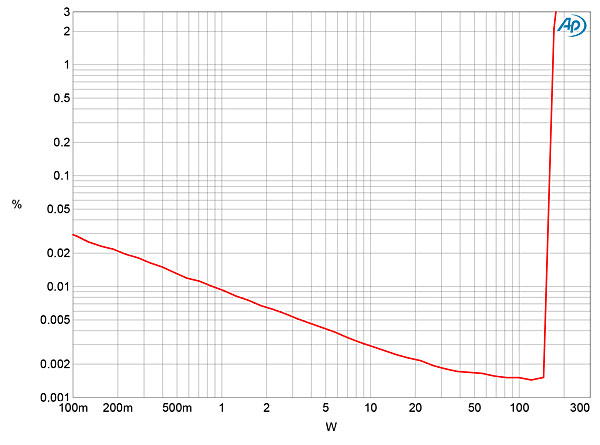

Measured at a relatively high level, 24.4V, which is equivalent to 74.5W into 8 ohms and 149W into 4 ohms, the Arcam's THD+N remained below 0.004% into 8 ohms at all audio frequencies, and below 0.008% up to 3kHz into 4 ohms (fig.6). Above 3kHz it rose slightly into 4 ohms, to 0.03% at 20kHz. The distortion is predominantly the third harmonic (fig.7), which was slightly higher in the left channel (fig.8, blue trace), but still low in absolute terms. Intermodulation distortion was also very low (fig.9).
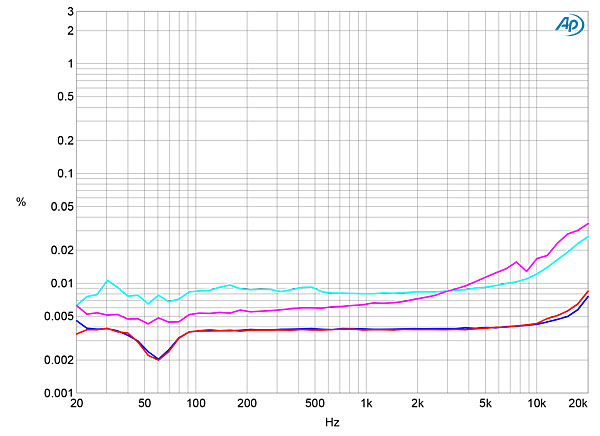

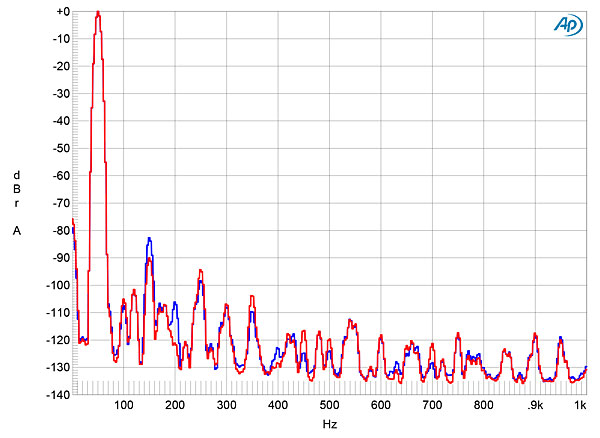

To test the Arcam's digital inputs, I used not only the Audio Precision's digital outputs but also WAV test-tone files sourced from a USB stick plugged into the SR250's rear panel. Via this USB port, the Arcam accepted 16- and 24-bit WAV files sampled at 44.1 and 48kHz, but displayed a message of "Unsupported File Type" with AIFF files and all files sampled at rates higher than 48kHz. I didn't test the SR250 with Ethernet data. With the volume control set to "99," digital data representing a 1kHz tone at –20dBFS produced an output level at the speaker terminals of 32.5dB, which is just below clipping. Therefore, the digital inputs need to be used with the volume control set no higher than "69." All digital inputs preserved absolute polarity.
Fig.10, taken with 44.1kHz-sampled USB data, reveals that the Arcam's digital reconstruction filter is a conventional FIR type. However, when I analyzed the Arcam's output with 24-bit data sampled at 44.1kHz representing white noise at –4dBFS (footnote 1), the resultant spectrum (fig.11, red and magenta traces) mostly rolls off above half the sample rate (vertical green line), with a rise in ultrasonic noise above 50kHz. With a full-scale tone at 19.1kHz, again sourced from 24-bit/44.1kHz WAV data on a USB stick, the spectrum (fig.11, blue and cyan traces) was "dirty," with many sidebands surrounding not only the 19.1kHz tone but also its harmonics. This graph was taken with the SR250 in Digital Stereo mode; checking the settings with the onscreen display and using the front-panel buttons rather than the annoying remote, it appears that input data are sample-rate-converted to 48 or 96kHz before being fed to the DSP circuitry. I had the Arcam set to 96kHz conversion for the testing, and it wasn't possible to select Stereo Direct for USB-sourced data.
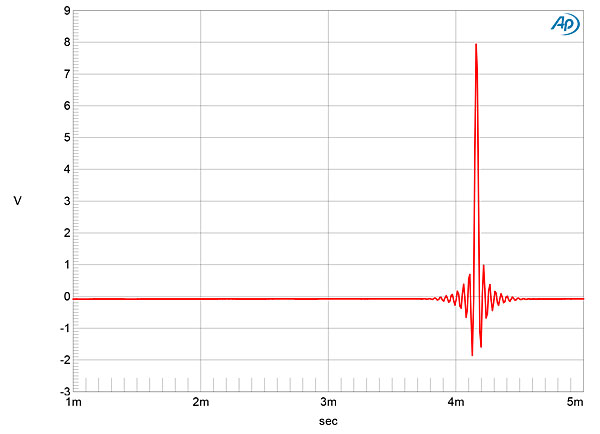
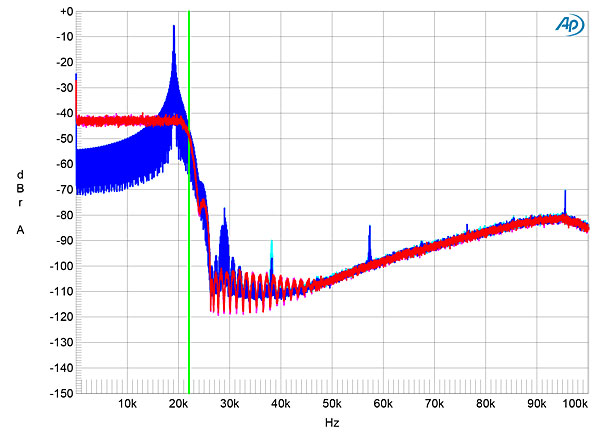
Tested with S/PDIF data, the SR250's frequency response with data sampled at 44.1, 96, and 192kHz data (fig.12) showed the expected sharp rolloff below half of each of the two lower sample rates, the rolloff continuing with 192kHz data to reach –6dB at 65kHz. Again tested with S/PDIF data, the increase in bit depth from 16 to 24 with a dithered tone at –90dBFS dropped the noise floor by almost 12dB (fig.13), implying that the Arcam's S/PDIF digital inputs offer around 18 bits of resolution. However, with data sourced from a USB stick, the tone at –90dBFS was missing (fig.14), suggesting lower resolution.

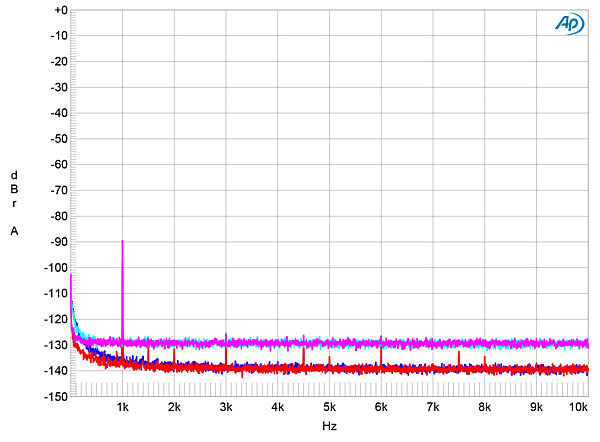

With undithered data at exactly –90.31dBFS, the Arcam output a symmetrical waveform with the three voltage levels clearly visible (fig.15). However, note the time discrepancy between the left and right channels, equivalent to a phase shift of around 120°—not totally out of phase, but still enough to be of concern. Alarmed by this, I used the onscreen display to perform a full factory reset, to ensure that all the DSP was zeroed out, but the phase discrepancy between the two channels persisted (fig.16) with both USB and S/PDIF data.

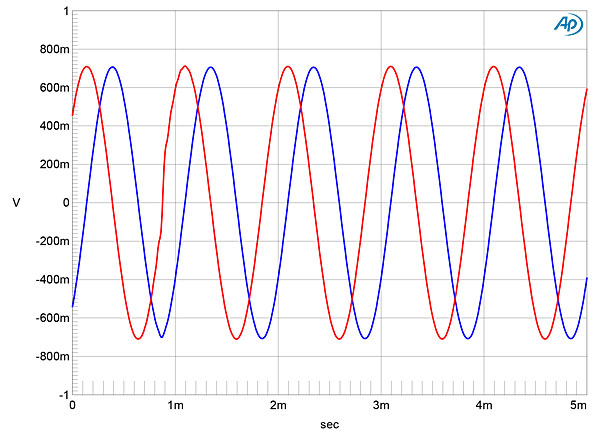
Finally, I tested the Arcam's S/PDIF inputs for their rejection of word-clock jitter. The results are shown in fig.17—the odd-order harmonics of the LSB-level, low-frequency squarewave are obscured by the noise floor. (What would have been their correct levels are shown by the sloping green line.) However, sidebands of unknown origin are present at ±240Hz and its odd-order harmonics, and these persisted with 24-bit S/PDIF data. When I tested for jitter rejection with USB-sourced data (not shown), the spectrum was obscured by the same sort of spuriae seen in fig.11.

In its Stereo Direct mode, the Arcam FMJ SR250 is a powerful integrated amplifier with low distortion. But while its S/PDIF input performs reasonably well, the sample-rate conversion applied to its USB port renders it inadequate for serious listening, in my opinion.—John Atkinson

"Stereophile seldom reviews A/V receivers."
Is that because they aren't esoteric enough or not expensive enough for the audiophile cache?

I imagine that's much of it, yeah. Also, maybe they're too convenient, there are more than a handful of boutique dealers/sources for them, and they mean less opportunity for outboard DACs, uber-expensive interconnects. Oh, and you don't get to explain them to your friends and guests.

We should see how A/V receivers stack up. Why aren't more A/V receivers being reviewed from time to time? Does one have to cost more than one (two or three in cheaper communities) times of total monthly expenses of many people for it to be tested here?
I know there are time and budget constraints. I know you can't test everything. But then, what's the impediment? Many readers of this publication own A/V receivers; perhaps that's all they will ever own. Might it not be "revelatory" (an audiophile reserved word for components costing tens of thousands) to see how an A/V receiver stacks up, especially against integrateds.
I have a Marantz SR4023. It has an EI transformer, folded fins of stainless steel for heatsinks, a sheet metal exterior, non-Hemi V8 capacitors. But you know what? There's nothing wrong with the way it sounds; there's much less wrong with how it effortlessly drives my speakers from two brands. Indeed, per manufacturer's specifications, it's 4ohm rated at 100watts (continuous) per channel. I've seen lighter weight integrateds getting testing in this publication. I doubt that a venerable manufacturer like Marantz would trump-up these numbers.
I'm not an expert on measurements, but I've gotten a grounding in the basics from those in this publication (thank you, JA). If you scrounge around on the internet, there are measurements for A/V receivers out there; they are less comprehensive than those here, but they are out there nonetheless.
Yes, I'd agree with what the last writer posited. What's there to hide with putting an A/V receiver, even an older one, on the test bench? After all, we had an article this month about rehabbing a speaker that was around before many of us were born.
Are the "better" component makers worried that people might find out that, with proper speaker placement, good digital sources, good recordings, a receiver (with comparably budget-minded speakers) might make people question the thousands of dollars (that we don't have) to buy something "better" for multiples of what an A/V or stereo receiver might cost?
I accuse none of subterfuge, but we should ask the question.

A hint as to why "Stereophile seldom reviews A/V receivers"- it's in the name of the publication.
We have a sister publication that reviews A/V receivers - and all kinds of home theater products - Sound & Vision magazine.
John Atkinson
Editor, Stereophile

Oh, I don't think something necessarily has to be expensive for them to review it. I got my Outlaw RR2160 stereo receiver based upon their review of it. It proved helpful, since I couldn't audition an Internet-only (no showrooms) piece like the Outlaw myself. BTW - They were right in saying it was as good as it gets for the price.

I use a NAD receiver and 4 KEF speakers XQ20 ans XQ10 and a subwoofer. The UniQ drivers are the best in terms of imaging and using the NAD settings for 4 point stereo with careful tuning of distance/delay, attenuation and adjustment of subwoofer XO frequency results in true High End sound. I find it ridiculous to have only 2 speakers because it is missing a trick. Sounds is coming from all sides people!

The downward slope of the trace in fig.4 indicates that actual distortion lies below the noise floor; the broken curve in fig.5 suggests that it reveals the effect of the class-G voltage-rail switching. I don't know why this wasn't apparent in the 8 ohm graph.
There's less distortion at 8 ohms, so it's obscured by noise, right?
Also, figures 6 & 7 are flipped.

In a new product review, can you include where it's ranked on Stereophile recommended component list (Class A/B/etc) if it makes it to the list? The reason the recommended list is so great is that consumers can compare different products in widely different price ranges. An individual product review is great and all but without knowing how it compares to its peers the review is less helpful than it otherwise could have been.
The recommended component list is updated every 6 months. If you can include where the reviewed product is on the list, it would help consumers a lot making informed audition/purchase, without waiting for 6 months.

It generally is not possible to include the rating in a review because the voting only takes place twice a year in preparation for. Recommended Components issues.

USD3600 for this receiver ??!!.......just look at the internals......LOL
Arcam should rename itself as......ArCON.....or......ArSCAM....LOL

The comments sections on the major audio magazine sites are just loaded with the worst kind of cynics, snarks and opinionated types. Your comment could have been constructive and may have deserved a response from the reviewer. But in this case, a surface judgement with insults based on a photograph is a little beneath the response level.

yes.....on hindsight, you're right........i should just ask people to stay as far away from this product as possible.........

YOU should stay away as far as possible, as I presume you have no one to 'ask' to stay away from a product such as this.
Write your own publication if you don't like the prices or coverage or blah blah blah..
You haven't even heard, seen or touched the product... I am sure every one will ignore you anyways, as what substantive opinion about this product do you have??
NONE.

At least to me, this sounds like a very similar product to the Classe Sigma 2200i integrated amplifier you guys reviewed 2 months ago. It would be interesting to compare the two products (and similar ones) by feature and sound.
https://www.stereophile.com/content/class%C3%A9-sigma-2200i-integrated-amplifier

I connect the arcam with a rotel rdd dac always I get a pcm input signal. I wanted to sell the dac but the sound gets hearable better if I connect it instead of the arcam sr250 digital inputs.
The remote is not annoying me. Its a programmable remote.

I bought this unit because I have a two channel setup and don’t ever expect to go multi channel. I also consider myself somewhat of an audiophile into opera and classical music and I wanted a serious listening experience. I didn’t get it with this AVR. I wound up bypassing it’s audio entirely, inserting my Audiomat Arpege tube amp into my system and routing RCA interconnects between the Audiomat Arpege and my video sources thus reducing the Arcam to just video switching responsibilities. I have 5 video sources, two of them vintage (laserdisc and VHS/DVD player) so if it still had component and s-video connections I would be much happier with it as a video switching device. But it sure is an expensive video switcher!

I bought this unit because I have a two channel setup and don’t ever expect to go multi channel. I also consider myself somewhat of an audiophile into opera and classical music and I wanted a serious listening experience. I didn’t get it with this AVR. I wound up bypassing it’s audio entirely, inserting my Audiomat Arpege tube amp into my system and routing RCA interconnects between the Audiomat Arpege and my video sources thus reducing the Arcam to just video switching responsibilities. I have 5 video sources, two of them vintage (laserdisc and VHS/DVD player) so if it still had component and s-video connections I would be much happier with it as a video switching device. But it sure is an expensive video switcher!